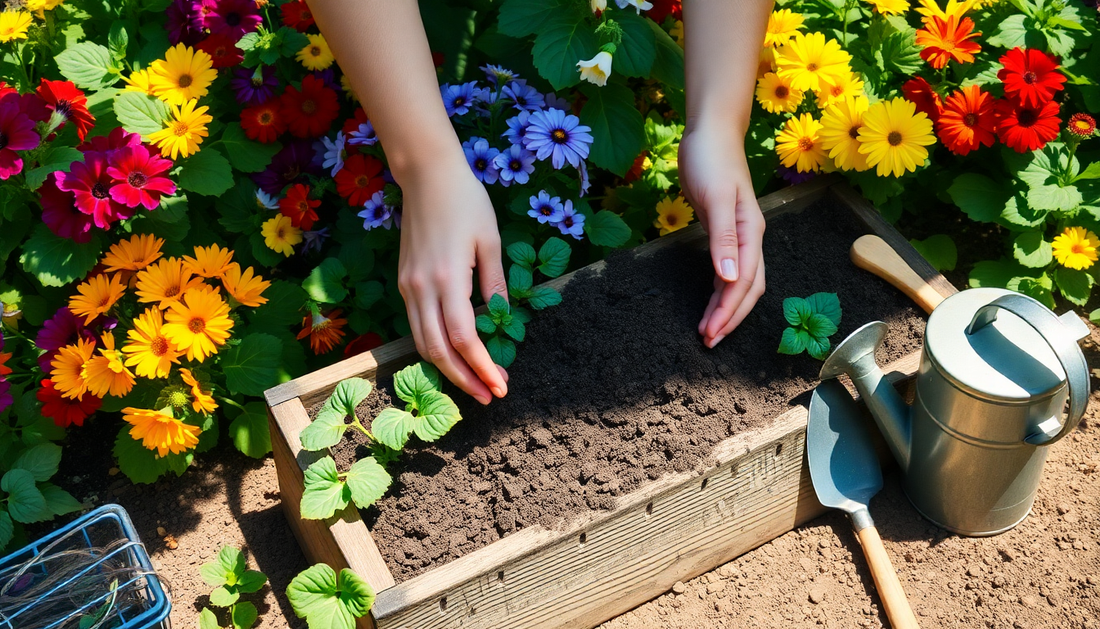
Cultivating Edible Flowers: The Art of Crafting the Perfect Potting Mix
Share
Gardening enthusiasts and home chefs alike have long been captivated by the allure of edible flowers. These vibrant, flavorful blooms not only add a touch of elegance to any dish, but they also offer a wealth of nutritional benefits. However, successfully growing edible flowers requires a delicate balance, and the foundation of this success lies in the potting mix.
In this comprehensive guide, we'll explore the art of adjusting your potting mix to create the ideal environment for your edible flower garden. Whether you're a seasoned green thumb or a budding gardener, you'll discover the key factors to consider and the practical steps to take to ensure your edible flowers thrive.
Understanding the Needs of Edible Flowers
Edible flowers have unique soil requirements that differ from traditional ornamental plants. These delicate blooms often prefer a lightweight, well-draining potting mix that is rich in organic matter and nutrients. The ideal potting mix should strike a balance between moisture retention and aeration, allowing the roots to flourish while preventing waterlogging.
Drainage and Aeration
Edible flowers are particularly sensitive to poor drainage, which can lead to root rot and other fungal diseases. A potting mix that is too dense or compacted can impede the flow of air and water, suffocating the roots. To ensure optimal drainage and aeration, consider incorporating materials such as perlite, vermiculite, or coarse sand into your potting mix.
Nutrient Content
Edible flowers require a steady supply of essential nutrients to thrive. A potting mix enriched with organic matter, such as compost or well-rotted manure, can provide a slow-release source of nutrients that will nourish your plants over time. Additionally, you may want to consider adding a balanced, slow-release fertilizer to your mix to ensure your edible flowers receive a consistent supply of nutrients.
pH Balance
The pH level of your potting mix can also have a significant impact on the health and growth of your edible flowers. Most edible flowers prefer a slightly acidic to neutral soil, with a pH range of 6.0 to 7.0. If your potting mix is too alkaline, you can adjust the pH by incorporating materials like peat moss or sulfur.
Crafting the Perfect Potting Mix
Now that you understand the unique needs of edible flowers, let's dive into the process of creating the perfect potting mix. By following these steps, you'll be well on your way to cultivating a thriving edible flower garden.
Step 1: Choose a Lightweight Base
The foundation of your potting mix should be a lightweight, well-draining material. Opt for a combination of peat moss, coco coir, or a pre-made potting mix designed for container gardening. These materials will provide the necessary aeration and moisture-holding capacity for your edible flowers.
Step 2: Incorporate Organic Matter
To enrich your potting mix with essential nutrients, add a generous amount of organic matter. This can include compost, well-rotted manure, or a specialized organic fertilizer. Aim for a ratio of 30-50% organic matter in your final mix.
Step 3: Adjust pH and Nutrient Levels
Test your potting mix's pH and nutrient levels to ensure they are within the ideal range for edible flowers. If the pH is too high, you can lower it by adding sulfur or peat moss. If the nutrient levels are low, consider incorporating a slow-release fertilizer or additional organic matter.
Step 4: Mix and Aerate
Thoroughly mix all the components of your potting mix to ensure an even distribution of materials. Use your hands or a garden fork to fluff and aerate the mix, creating a light, fluffy texture that will support healthy root growth.
Step 5: Moisten and Let Rest
Before planting your edible flowers, moisten the potting mix with water, ensuring it is evenly damp but not waterlogged. Allow the mix to rest for a few days, giving the organic matter time to break down and the pH to stabilize.
Maintaining the Perfect Potting Mix
Keeping your edible flower potting mix in optimal condition is an ongoing process. Here are some tips to help you maintain the perfect growing environment for your blooms:
Regular Soil Testing
Periodically test your potting mix to ensure it maintains the appropriate pH and nutrient levels. This will allow you to make any necessary adjustments before your plants show signs of stress.
Replenishing Organic Matter
Over time, the organic matter in your potting mix will break down, depleting the available nutrients. Regularly top-dress your containers with a fresh layer of compost or well-rotted manure to replenish the organic content.
Monitoring Moisture Levels
Edible flowers thrive in a consistently moist, but not waterlogged, environment. Check the soil moisture regularly and adjust your watering schedule as needed to maintain the ideal balance.
Rotating Crops
To prevent the buildup of pests or diseases, consider rotating your edible flower crops from season to season. This will help to keep your potting mix healthy and vibrant.
By following these guidelines and adjusting your potting mix to meet the unique needs of edible flowers, you'll be well on your way to cultivating a thriving, bountiful garden. Embrace the art of crafting the perfect potting mix, and let your edible flower garden flourish with vibrant, flavorful blooms.
Conclusion
Cultivating a successful edible flower garden starts with the foundation of a well-crafted potting mix. By understanding the specific requirements of these delicate blooms and taking the time to adjust your mix accordingly, you'll create an environment that allows your edible flowers to thrive.
Remember, the journey of gardening is an ongoing learning process, and each season will bring new challenges and opportunities. Stay curious, experiment, and enjoy the process of nurturing your edible flower garden. With the right potting mix and a touch of care, you'll be rewarded with a bountiful harvest of vibrant, flavorful blooms that will elevate your culinary creations and delight your senses.
Happy gardening!
